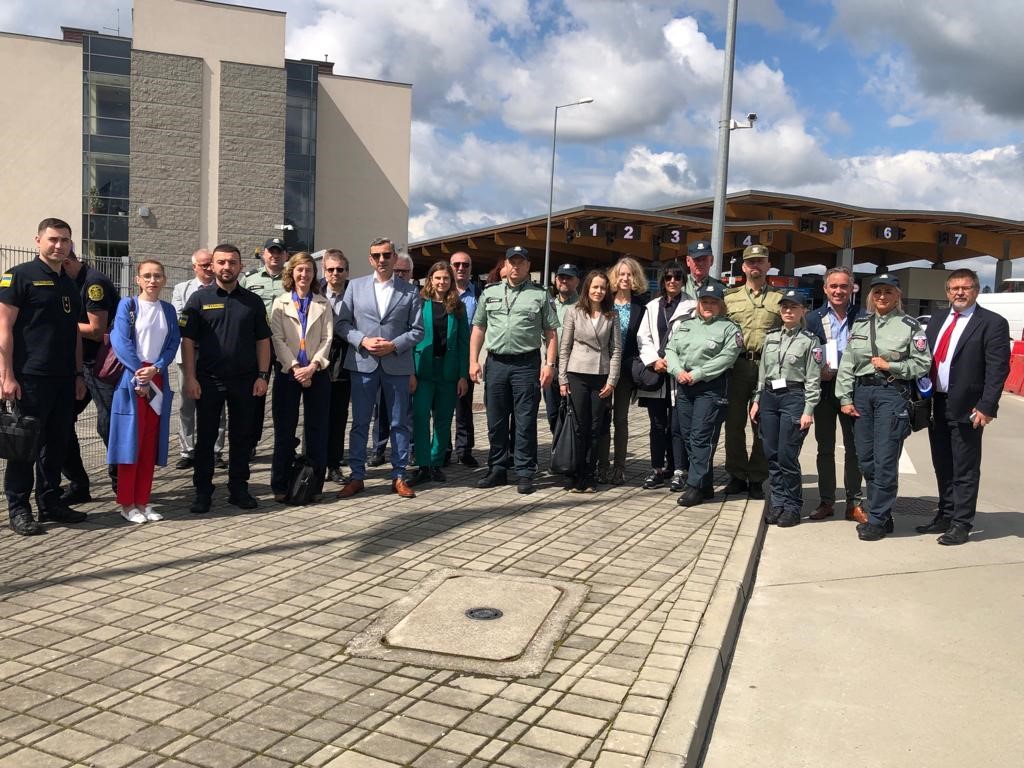For the last four days of June, a delegation of more than 10 people from Brussels, as a part of a diagnostic visit, analyzed the current situation on the Polish-Ukrainian border crossing points.
The aim of the diagnostic mission was to verify the scale and difficulties of grain import into the EU, and to make recommendations that would have a real impact on improving border clearance and flow of agricultural goods.
Key participants
Delegation of 10 representatives from various European Commission institutions visited Poland: Directorate General of Customs and Taxation (DG TAXUD), Directorate General of Mobility and Transport (DG MOVE), Directorate General of Health and Food Safety (DG SANTE) and Directorate General of Agriculture and Rural Development (DG AGRI).
The Polish side was represented by all services and authorities operating at border crossings: Ministry of Finance, National Revenue Administration, Ministry of Agriculture and Rural Development, Border Guard, Veterinary Inspection, Plant and Seed Protection Inspection, Inspectorate of Trade Quality of Agricultural and Food Products. Representatives of the Head of National Revenue Administration of Poland in Kiev and Brussels have been also part of Polish delegation. The Ukrainian side was represented by customs authorities and inspection services.
Wider border spectrum
In order to analyze the current situation on the Polish-Ukrainian border and to present a broader perspective and context, the program of the visit included various types of border crossing points:
- Customs Office in Rzeszów Jasionka (airport) – for customs clearance of military equipment, humanitarian aid and diplomats’ traffic;
- road border crossing points in Budomierz, Korczowa – Krakowiec, Medyka – Szegini,
- railway border crossing point in Medyka
- railway border crossing point in Malhowice – Nizankowice , which will be opened in first quarter of 2024.
The delegation also visited the construction of the Customs Office in Przemyśl-Krówniki , which will be launched in autumn 2023, including a clearance platform for 80 trucks.
What does the European Commission recommend ?
Some of the key recommendations to improve customs clearance at the Polish-Ukrainian border and to make export of the Ukrainian grain fast and simple, are :
- increasing the number of vehicles in the common transit procedure with a plan of preparing a promotional campaign among Polish and Ukrainian entrepreneurs,
- preparing special transit lanes at border crossing points
- increasing the share of rail transport in border traffic;
- supporting the further development of the Ukrainian queue electronic system
- derogation of procedure of release for free circulation on border crossing points
Meeting with Ukrainian side
Representatives of the European Commission, visiting PL-UA border had a great chance to meet with the Ukrainian side at three border crossings in Medyka, Budomierz and Korczowa. This was possible thanks to the constant and fruitful cooperation of Revenue Administration Regional Office in Rzeszów and officers of the Customs and Tax Control Service, who work directly with Ukrainian border authorities.
Visit on Polish-Ukrainian border strip, gave European Commission’s representatives wide picture of customs procedures in the natural, quite challenging environment. Diagnostic visit was organized thanks to the great involvement of National Revenue Administration and CELBET. Cooperation team leader, Ms Aneta Łomańska-Grzegorzak from Poland, played a key role in organizing whole visit.

![]()

